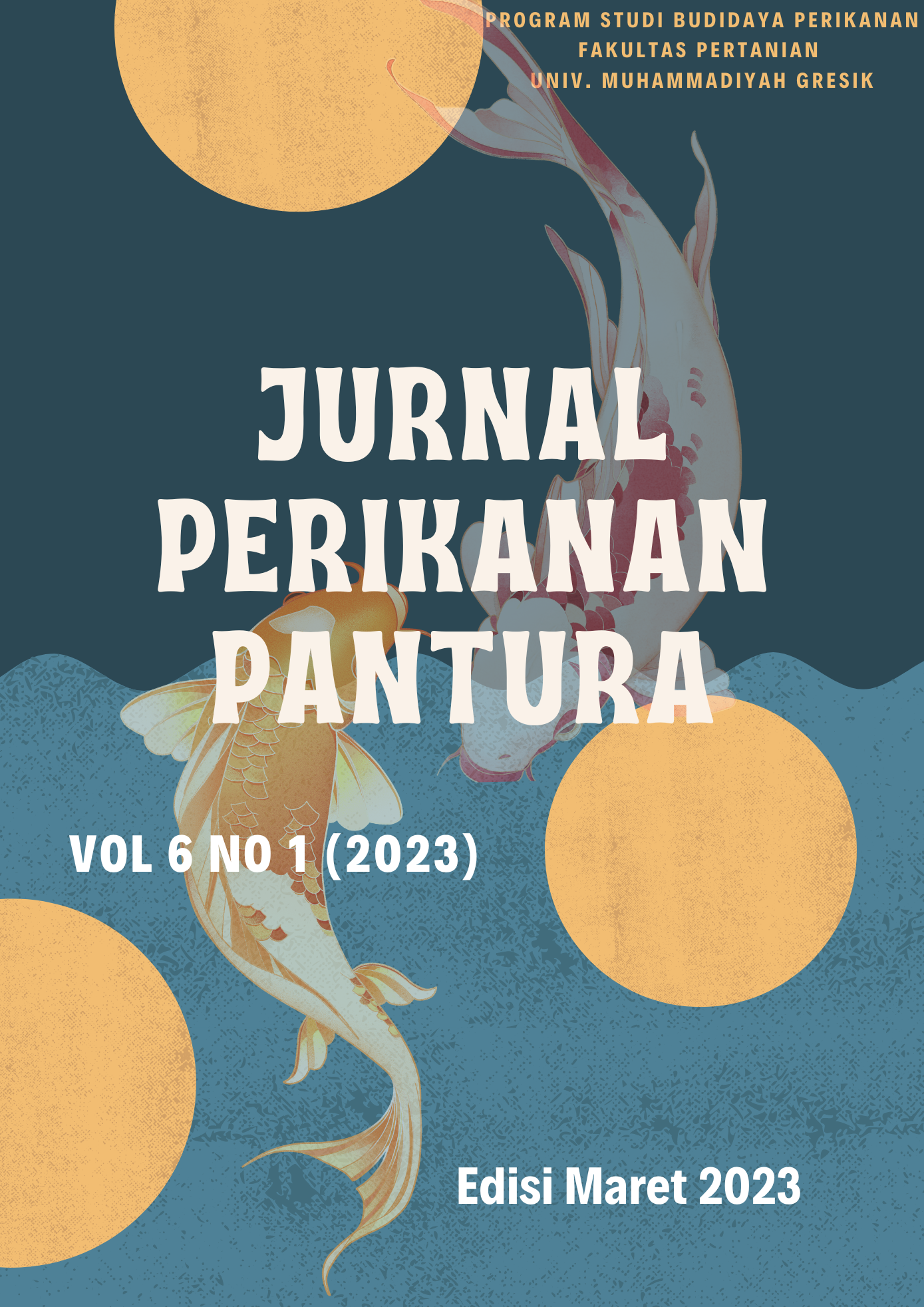KEPADATAN, KARAKTER MORFOLOGI, DAN PERTUMBUHAN LAMUN Cymodocea rotundata DI PANTAI YANKARWAR, MANOKWARI, PAPUA BARAT: APAKAH ADA PERBEDAAN DIANTARA ZONA INTERTIDAL?
DOI:
https://doi.org/10.30587/jpp.v6i1.5367Keywords:
Intertidal Zone, Morphological Adaptation, Seagrass GrowthAbstract
Cymodocea rotundata is a seagrass species that occupy habitats in the intertidal zone. The ability of this species to occupy the intertidal zone is thought to be related to its particular morphological adaptations in response to fluctuations in local aquatic environmental conditions. This study aims to describe habitat conditions, distribution related to density, morphological differences, and growth among C. rotundata seagrass stands in the upper, middle, and lower intertidal zones of Yankarwar Beach, Manokwari, West Papua. Transects and quadrats methods were used to collect seagrass samples, so information on their distribution and density could be obtained. The seagrass samples collected were also analyzed (counted and measured) for their morphological characters including the number of leaves, leaf length, leaf width, horizontal sheath internode length, root length, stand weight, leaf weight, rhizome weight, and root weight. Seagrass growth was obtained by marking the leaves and observing them for 10 days. The results of this study indicate that the conditions of the physicochemical parameters of the intertidal waters are still suitable for the growth of this seagrass species. The highest density was found in the upper intertidal zone (3,161.73 stands.m-2) and followed by the middle intertidal zone (962.04 stands.m-2). Although most of the morphological characters of seagrasses and seagrass parts were relatively the same between the three intertidal zones, larger leaf widths and lengths of horizontal rhizome internodes were found in stands in the two upper intertidal zones. Differences in growth as reflected by the increase in leaf length and dry leaf weight also showed greater values in the upper and middle intertidal zones. This condition shows the adaptability of this seagrass species to variations in environmental parameter conditions in the middle and upper intertidal zone. In addition, the results of this study indicate the presence of C. rotundata, especially in the intertidal aquatic environment which has an important ecological role, including as a substrate stabilizer. Therefore, this vegetation conservation effort is very important.
Keywords: intertidal zone, morphological adaptation, seagrass growth






